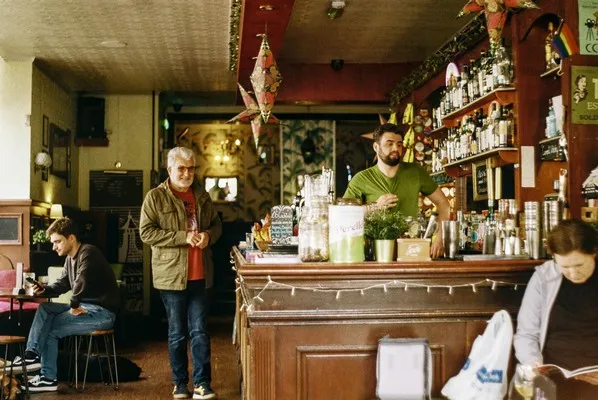Table of Contents
- The Pub as a Social Institution
- A Brief Overview of the British Class System
- Types of Pubs and Class Distinctions
- Social Interaction and Class Performance in Pubs
- Gender, Class, and the Pub
- The Pub as a Site of Class Reproduction
- Conclusion: The Pub as a Microcosm of British Society
The British pub is an institution that is deeply woven into the social fabric of the United Kingdom. It is more than a place to consume alcohol; it is a space where social interactions, identities, and boundaries of class are negotiated and reaffirmed. In this article, we explore the British class system through the lens of the pub, examining how this seemingly ordinary social setting can reveal much about the complexities of class stratification and cultural distinctions in Britain.
The Pub as a Social Institution
Pubs, short for public houses, have long been a significant part of British social life. They serve as communal meeting places that transcend the private sphere of the home, offering a space where different social groups can come together in a shared setting. However, the inclusiveness of the pub environment is often illusionary, as the role of the pub in British society is marked by intricate class distinctions. Despite their reputation as places where everyone can gather, pubs are sites where the British class system is implicitly upheld and reproduced.
Pubs are layered with cultural meanings that relate to social status, respectability, and identity. The type of pub an individual frequents, their mannerisms while there, and even the choice of drink are imbued with class markers that create both cohesion and division. By understanding the dynamics of class within pub culture, we can gain insight into the wider British class system and the subtle ways in which it persists in everyday life.
A Brief Overview of the British Class System
To understand the social role of pubs, it is essential to contextualize the British class system. Unlike some other societies, where class is determined largely by income, the British class system is characterised by a more nuanced mixture of economic, cultural, and social capital. Class in Britain is as much about values, tastes, and lifestyle as it is about financial means.
Sociologists such as Pierre Bourdieu have highlighted the importance of cultural capital in determining one’s class position. In Britain, where concepts of social hierarchy are historically entrenched, factors such as accent, education, and leisure pursuits all contribute to defining one’s place within the class structure. The pub, as a site of leisure, thus becomes an arena where cultural capital is both displayed and perceived, serving to either reinforce or contest social divisions.
Types of Pubs and Class Distinctions
The Traditional Working-Class Pub
Traditional working-class pubs are often characterised by their sense of familiarity, community, and what sociologists call “communitas” – a shared sense of belonging and equality among patrons. In these pubs, the decor is typically unpretentious, with worn wooden furniture, simple décor, and an atmosphere that emphasizes camaraderie over ostentation. The regulars of these pubs are often people from the local area, and the focus is less on style and more on substance—good company, affordable drinks, and an informal, relaxed setting.
The working-class pub often serves as an extension of the community, providing a venue for conversation, social support, and the maintenance of social ties. These pubs are frequently a male-dominated space, although this has shifted over the years with changes in gender roles. Historically, they have been a place where working men would gather after a long day, using the pub as a space to decompress, socialise, and share news or grievances.
The cultural capital in working-class pubs is derived from authenticity and local embeddedness. There is a distinct emphasis on being “one of us,” and those who frequent these pubs often find identity and solidarity through their shared experiences of labour, locality, and common struggle.
Middle-Class Gastropubs
In contrast, gastropubs cater largely to middle-class patrons, and are often designed to reflect middle-class tastes and sensibilities. These establishments feature more elaborate menus, with an emphasis on gourmet food, craft ales, and an aesthetic that blends tradition with modernity. The interiors are frequently decorated to evoke a sense of rustic charm, yet with an upscale twist—think exposed brick walls, vintage fixtures, and carefully curated artwork.
The gastropub represents a particular type of cultural capital—an appreciation for quality, provenance, and an air of discernment. Here, the class distinction lies not only in the types of drinks offered but also in the overall experience, with the expectation that patrons are as interested in the sourcing of ingredients as they are in the quality of service. Unlike the working-class pub, the gastropub prioritises the culinary experience and often attracts families, professionals, and individuals who view eating out as a form of cultural consumption.
In these settings, class is performed through displays of taste. For example, the choice of a craft IPA over a mass-produced lager signals a preference for niche products and a certain level of connoisseurship. The gastropub experience is therefore as much about lifestyle and taste as it is about socialising.
Exclusive Private Clubs and the Upper Class
Beyond the working-class pub and the gastropub lies the realm of exclusive private clubs—spaces frequented by the upper echelons of British society. While these clubs are technically distinct from pubs, they nonetheless serve as spaces for the consumption of alcohol and social interaction, albeit in a much more controlled and exclusive environment. These establishments are defined by rules, dress codes, and memberships, and access is often limited to those with social standing or significant wealth.
The private clubs of London, for instance, are steeped in tradition and carry significant cultural capital. These spaces are more about maintaining social exclusivity and preserving the boundaries of the upper class. While the working-class pub is about community and the gastropub about cultural consumption, the private club is about distinction—a way for the upper class to set themselves apart from the rest of society.
Social Interaction and Class Performance in Pubs
Language, Accent, and Class
Get the full article AD FREE. Join now for full access to all premium articles.
View Plans & Subscribe Already a member? Log in.






